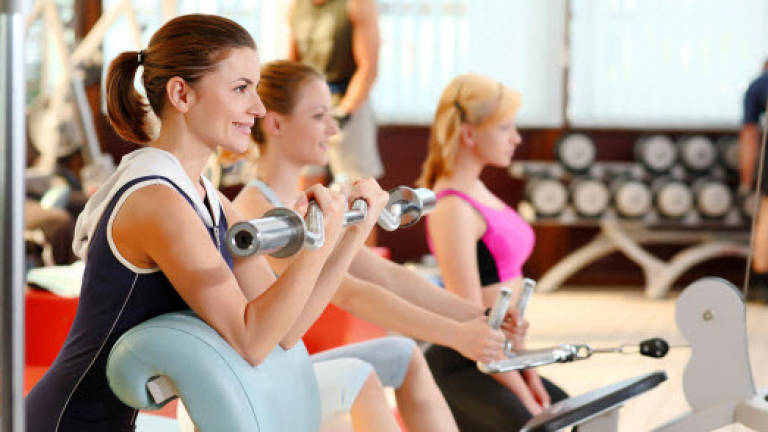Fighting Fit - Juggling with gym jargon

GETTING fit is not easy, and part of the problem is walking into a gym only to be greeted with menacing-looking machines and cold, intense stares.
Most gyms try their level best to make newbies feel welcome, but it can be a frightening experience.
Gym goers are quickly bombarded with jargon such as reps, sets, anaerobic, aerobic, and macros, on top of the thousands of workout plans available to them.
Understanding these terms can help fitness newbies have fun in the gym, and stay motivated.
Anaerobic
Anaerobic training is defined as performing any exercise with maximum effort under a short period of time.
These workouts are done in short durations with high intensity, lasting anywhere from a few seconds, to up to two minutes.
Anything longer than that, and the body’s aerobic system kicks in.
Explosive jump squats and sprinting are considered anaerobic exercises, as these workouts use fast twitching muscle fibres.
According to research, anaerobic exercises help burn more calories at rest, and develop strength. The end result: a more lean and defined body.
HIIT
This high intensity interval training goes hand-in-hand with anaerobic training. HIIT has always been a staple among Olympic athletes, but its rise to fame began in the early 1990s when numerous studies proved the effectiveness of interval conditioning for fat loss.
These studies concluded that more progress can be achieved in 15 minutes of interval training (done every 48 hours), than jogging on the treadmill for an hour.
Going all out for 20 seconds before resting for 10 may sound too simple to be effective, but science proves otherwise.
HIIT is very popular as it can be modified for people of all fitness levels. Whether you are a fan of cycling, running, swimming or group exercise classes, you can fit a HIIT protocol into your favourite activity.
Functional training
Whether you are carrying six bags of groceries or playing frisbee with your children, functional exercises are important to develop muscles that make it easier and safer to perform everyday activities.
From getting dressed, to walking down a flight of stairs, core strength is important for good balance, stability and posture. Functional exercises tend to work different joints and muscle groups in one single exercise.
For example, a bicep curl only has one moving muscle: the bicep. A functional exercise may involve the elbows, shoulders, spine, hips, knees and ankles.
Functional exercises – such as single leg dumbbell rows, Turkish get-ups and kettlebell snatches – can be done at home or at the gym.
IIFYM
If you spend enough time around fitness enthusiasts, you are bound to hear the term ‘macros’ being used a lot. You will hear them say whether a certain meal fits into their ‘macro’ plan.
If it fits your macros (or IIFYM as the “cool crowd” calls it) is all about tracking the amount of protein, carbohydrates, and fats a person consumes every day.
Made popular by bodybuilders and physique competitors who grew tired of eating bland and boring food when dieting for a contest, an IIFYM diet claims that as long as the body is in a calorie deficit, fats will continue to melt away.
IIFYM states that it is acceptable to consume a cheeseburger as long as it stays within the required calorie intake for the day.
Before starting a IIFYM plan, it is important to know how many calories your body burns in an average day. Eat 15% to 20% less of that number and split those calories up between fat, protein and carbohydrates with adequate fibre and water intake.
So, the next time you hear these jargons, do not panic. Everybody was once a beginner.
And, do not be afraid to ask questions or look up certain terms if you are not sure what it means.
Nevash Nair is currently on his own fitness journey in Thailand. Contact him via email at lifestyle.nevashnair@thesundaily.com.